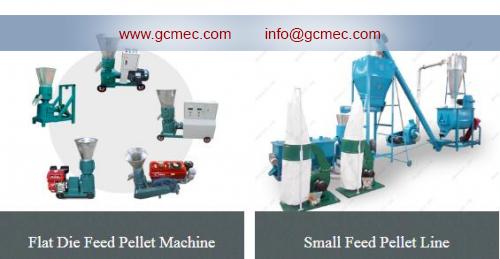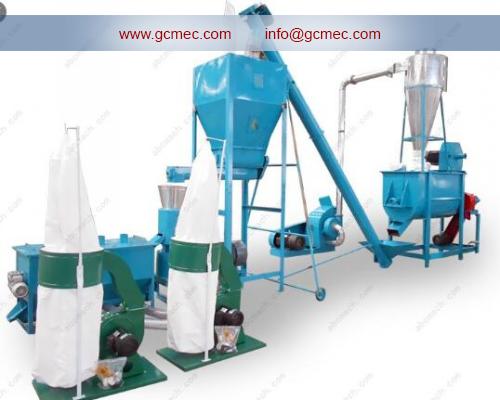What is the cause of bending crack in granule feed processed
In the feed grain processing process, sometimes abnormal appearance of grain, such as feed grain bending and crack, for example, for the lack of experience or new manufacturers, sometimes can not find the crux of the problem where, only to request the outside world or
cattle feed plant manufacturers help. Today ABC Machinery
cattle feed business small series on this problem, with you to explain.

The particle is curved and has many cracks on one side. This phenomenon usually occurs when the particle leaves the ring mold. (1) When the cutting edge position is far from the surface of the meshing area between the ring die and the press roller, or the cutting edge Angle between the cutter plane and the meshing area is unreasonable or the cutting edge is blunt, when the particles are extruding from the die hole, they are broken or torn by the cutting tool rather than cut off; Too large pressure relief hole. These two conditions result in partial grain bending and many cracks on one side. The crack occurs on the cross section of the particle, but without bending. The main reasons are as follows: (1) When the fleecy feed containing more fibers is granulated, because it contains fibers longer than the pore diameter, when the particles are extruded, the expansion of the fibers causes the particles to have perforated cracks on the cross section.(2) low tempering temperature or short tempering time, insufficient tempering, feed maturity is not enough.(3) bonding material content is too small.(4) high moisture after tempering.
The particles develop longitudinal cracks
(1)formula contains fluffy and slightly elastic raw materials, in the course of tempering is to be able to absorb water expansion, after the ring mold granulator compression granulator, will be due to the effect of water and the elasticity of the raw materials themselves and bounce, produce longitudinal cracks. (2) Too low ring moulding ratio. (3) Low tempering temperature or short tempering time, insufficient tempering, the degree of curing feed is not.
The particles produce radiation cracks
This appearance is mainly due to the particles containing larger particles, these large particles in the conditioning, it is difficult to fully absorb the moisture and heat in the water vapor, unlike other fine raw materials so easy to soften, and in cooling, due to the degree of softening, resulting in the difference in shrinkage, as a result of radiation cracks.

Improvement measures:
A) Increase the compression force of ring mold
poultry feed making machine on feed, that is, increase the compression ratio of ring mold, thus increasing the density and hardness value of granule material;
B) Pulverize the raw materials to a finer extent. If molasses or fat is added, the uniformity of molasses or fat distribution should be improved and the amount of added should be controlled to improve the density of the granule and prevent the feed from being soft;
C) Adjust the distance of the cutting tool from the surface of the ring die, usually the distance of the knife edge from the surface of the ring die is not greater than the diameter of the particles produced, or use a sharper cutting blade instead. Thin blades can also be used for small diameter particles, and make the thin blades adhere to the surface of the ring die for production;
D) The use of binder granulators is conducive to improving the internal binding force of particles.



